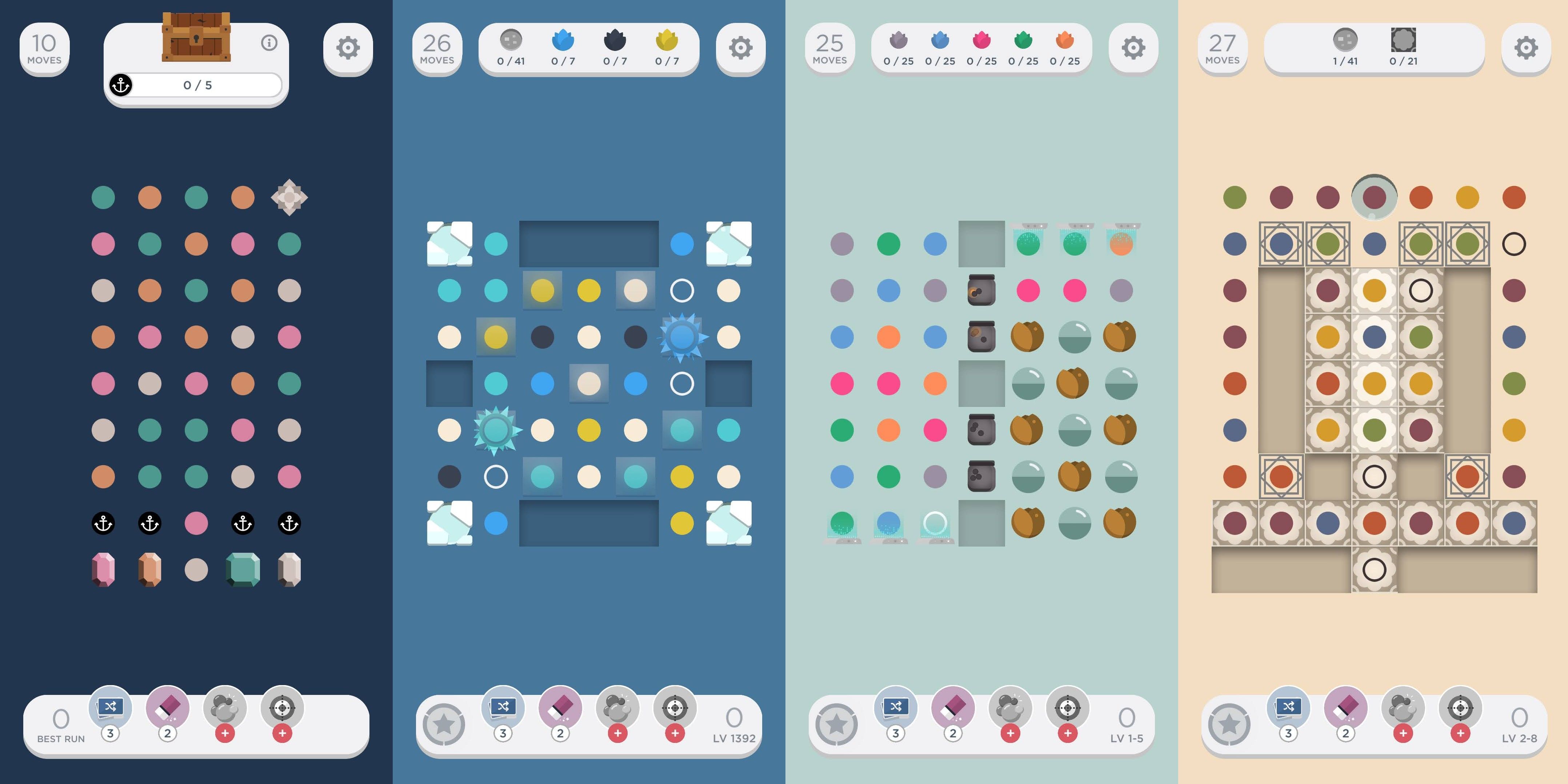Two Dots, the mobile puzzle game from Playdots, Inc., is a variation on tried-and-true mobile mechanics. But despite its familiar design and the bad reputation that mobile games have earned, this game packs in more than an unsuspecting player might guess.
Mobile games have often been considered less complex or valuable compared to computer or console games. The limited screen size and processing power of a mobile phone mean that games have to be designed differently without hogging on-screen real estate with inventory menus or eating through the CPU with labor intensive graphical production. But these constraints don't mean that mobile games are any worse than console games; instead, mobile games like Two Dots use these constraints to their advantage.
Two Dots is a mobile puzzle game of the same general premise as other prominent phone games like Candy Crush or Best Fiends. Each level features a new arrangement of colorful dots on the screen along with a series of goals. Connecting dots of the same color erases them from the level, and connecting four in a square shape erases all dots of that color. Relying on these mechanics, players work to remove dots in order to meet win conditions and beat the level.
But Two Dots takes this simple, Tetris-esque premise and expands it with intricate goals and unique forms of the titular dots. Sometimes, the dots appear as anchors, and players must drop these all the way to the bottom of the screen by removing everything beneath them. Other times, dots are buried under ice and must first be excavated. Dots can also be flowers, bombs or fire, but these dots combine to create compelling challenges for players to solve.
Regardless of the number of new mechanics introduced with these dot-variants, Two Dots will never be as complex as many AAA titles. It will never demand all of a player's attention with overly-complicated inventory management, quick-time events and health-draining final boss battles. But it was never designed to.
Two Dots and other mobile connect-like-colors games allow for gaming as a secondary, background task. Its purpose isn't to draw players in with complex mechanics or story, but to allow them to idly fidget with something while watching television or commuting. The sort of distracted-playing encouraged by such games offers users a chance to engage with them more frequently, even if it's only while completing other tasks. This allows players to incorporate these mobile games into their regular daily schedule.
But being a background game isn't a bad thing, and it doesn't mean the game is somehow less interesting. Two Dots still requires planning and practice. It's a game that a player can improve at that asks players to internalize a set of rules and movements and to plot out the best use of the available mechanics. But even if it weren't skill-building or engaging in the way that larger, more visually intense games are, it's still worthwhile.
The repetitive motion of swiping to connect dots without the full attention of the brain can put a player in an almost meditative state. Dots are noticed and puzzles are solved, but the motions become almost mindless, falling deeper below the player's conscious actions. In this way, Two Dots becomes a physical practice that can allow for mental effort as players concentrate to solve a level, but also lets players zone out and repeat movements.
These meditative games provide more function than a typical, large-scale game. Not only do they provide opportunities for players to improve, to train and level and showcase their skill and success, but they also do not stand in the way of other activities. The calm, repetitive motions without intense engagement of the mind provides a soothing effect. Two Dots can serve not only as a distraction or a way to occupy a player's hands, but also as a path toward calmness.
Some games demand all of a player's attention. They drop narrative clues in introductory cut scenes, require substantial tutorials and ask players to learn various mechanics. Other games are so artistically stunning in their graphics and soundtracks that they immerse and engage players in a world they can't look away from. But Two Dots wasn't designed for that and, ultimately, that isn't a bad thing. Not only are mindless, casual games like Two Dots are worth playing, but their calming effects can make them even more valuable than big-name titles.



